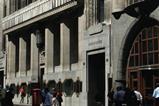
A word map of the past 18 months would show two strong recurring themes. The champion, without doubt, would be the phrase 'you’re on mute'. But the close runner-up would probably be the word ‘resilience’.
It’s not just a buzzword; it’s a concept, embedded into company culture and the beating heart between employee experience and business performance. Of course, resilience is inherently individual. Life experiences and circumstances can all affect how resilient someone is – and the areas that may need support. It’s often perceived as intangible, difficult to quantify – and yet Aon research has recently highlighted the direct link between thriving, resilient employees and business outcomes.
While it might be straightforward to assess workforce resilience, it’s often not quite so easy to implement change. So what are the key factors to building a resilient workforce?
The first port of call in any employee-led strategy is understanding requirements – but this can be challenging, especially when asking employees about personal or potentially sensitive information. While traditional employee listening tools – such as surveys or focus groups – can start to build a picture, they are prone to bias (whether consciously or not).
Technological advances now allow companies to dig deeper, and using neuroscience-led technology allows businesses to get a better understanding of what employees are really thinking.
Aon’s Rising resilient report showed that resilience triples when employers adopt a well-rounded health and wellbeing programme – one that supports physical, social, emotional, financial, and career needs. However, only 44% of employers have a formal wellbeing strategy, according to Aon's 2021 Benefits and trends survey.
There’s a clear opportunity for more businesses to invest in wellbeing and a clear case for taking a holistic approach. The report identified 10 key factors which employers can influence and should look to create a strategy that incorporates them all to build workforce resilience.
Although when designing a wellbeing programme you’re predominately looking at the ecosystem within your business, it’s also important to consider the wider socio-economic trends which may be impacting your employee population. From high housing costs to an increasingly aging population, there are a plethora of elements that may influence and impact employees' lives. Identifying these trends can help focus your strategy, and understanding their influence can help futureproof your approach for subsequent generations entering the workforce.
It goes without saying that you could have the best wellbeing programme in the world, but if you don’t proactively communicate about it, then uptake and engagement will be poor. Communication is also a clear priority for businesses this year. Aon’s 2021 Benefits and trends survey shows that nearly all businesses (98%) believe it is important to increase employee understanding and engagement with benefits and wellbeing. It’s also a process that has been heavily impacted by Covid-19; with swathes of people working from home or furloughed, companies will need to work harder than ever to cut through ‘screen fatigue’. A targeted, multi-channel approach will help capture the attention of your entire workforce – whether that’s via email, print, app, or even virtual reality.
Of course, building a resilient workforce isn’t a task that can be completed in a day. It’s a long-term goal, which needs a strong strategic foundation underpinned by continuous feedback. Once that first step has been taken, employers should continue to check-in with employees, assess engagement levels and analyse impact. It might be a slower journey than anticipated, but the destination is worth the effort.
Avneet Kaur is Europe, Middle East and Africa (EMEA) wellbeing solutions leader at Aon
















